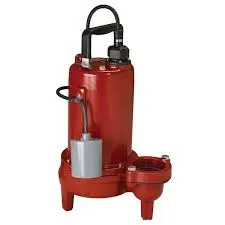Turkmen
- Afrikaans
- Albanian
- Amharic
- Arabic
- Armenian
- Azerbaijani
- Basque
- Belarusian
- Bengali
- Bosnian
- Bulgarian
- Catalan
- Cebuano
- Corsican
- Croatian
- Czech
- Danish
- Dutch
- English
- Esperanto
- Estonian
- Finnish
- French
- Frisian
- Galician
- Georgian
- German
- Greek
- Gujarati
- Haitian Creole
- hausa
- hawaiian
- Hebrew
- Hindi
- Miao
- Hungarian
- Icelandic
- igbo
- Indonesian
- irish
- Italian
- Japanese
- Javanese
- Kannada
- kazakh
- Khmer
- Rwandese
- Korean
- Kurdish
- Kyrgyz
- Lao
- Latin
- Latvian
- Lithuanian
- Luxembourgish
- Macedonian
- Malgashi
- Malay
- Malayalam
- Maltese
- Maori
- Marathi
- Mongolian
- Myanmar
- Nepali
- Norwegian
- Norwegian
- Occitan
- Pashto
- Persian
- Polish
- Portuguese
- Punjabi
- Romanian
- Russian
- Samoan
- Scottish Gaelic
- Serbian
- Sesotho
- Shona
- Sindhi
- Sinhala
- Slovak
- Slovenian
- Somali
- Spanish
- Sundanese
- Swahili
- Swedish
- Tagalog
- Tajik
- Tamil
- Tatar
- Telugu
- Thai
- Turkish
- Turkmen
- Ukrainian
- Urdu
- Uighur
- Uzbek
- Vietnamese
- Welsh
- Bantu
- Yiddish
- Yoruba
- Zulu
Telephone: +86 13120555503
Email: frank@cypump.com
Nov . 24, 2024 10:03 Back to list
submersible sewage ejector pump
Understanding Submersible Sewage Ejector Pumps A Key to Efficient Waste Management
In the world of wastewater management, submersible sewage ejector pumps play a crucial role. These specialized pumps are designed to handle sewage and effluent from residential and commercial properties, effectively transporting waste from lower levels to higher elevations and connecting it to the main sewer system or septic tank. Their importance cannot be overstated, especially in areas prone to flooding or where gravity drainage is not feasible.
What is a Submersible Sewage Ejector Pump?
A submersible sewage ejector pump is a type of pump that operates while submerged in sewage or wastewater. Unlike standard sump pumps that handle clean water, ejector pumps are engineered to manage the more challenging task of moving solids-laden sewage. They consist of a sealed motor that is protected from the corrosive and abrasive nature of wastewater, allowing for efficient operation in harsh environments.
These pumps are typically used in basements, crawl spaces, or anywhere sewage might accumulate below the level of the sewer system. When waste rises to a designated level, the pump activates automatically, using a float switch or other sensors, to eject the sewage upwards and out of the pit where it has collected.
Components and Mechanism
The main components of a submersible sewage ejector pump include the pump body, impeller, motor, and float switch. The impeller is responsible for creating the flow of water, while the motor powers the mechanism. The float switch monitors the water level and triggers the pump when necessary.
Submersible pumps are generally more efficient than their non-submersible counterparts due to their design, which allows them to push water directly rather than pulling it. This design reduces the risk of clogging and enhances the pump's ability to handle solid materials, such as human waste, toilet paper, and other debris.
Applications
Submersible sewage ejector pumps are widely used in various applications. They are popular in residential settings, particularly in homes with basements that are below the level of the municipal sewer system. In such cases, these pumps are essential for preventing sewage backup and flooding.
submersible sewage ejector pump

In commercial applications, they are used in restaurants, hotels, and office buildings, ensuring efficient waste removal from restrooms and kitchens. Moreover, construction sites often utilize these pumps during excavation projects where groundwater and sewage may accumulate.
Advantages
The benefits of using submersible sewage ejector pumps are numerous. First and foremost, they are designed for reliability. With a robust construction, they can operate continuously without frequent breakdowns. This reliability is crucial in preventing sewage spills, which can lead to environmental hazards and health risks.
Additionally, submersible pumps are generally quieter than above-ground models, making them suitable for residential use where noise pollution is a concern. They also offer ease of installation since they do not require elaborate piping systems.
Maintenance and Care
While submersible sewage ejector pumps are resilient, they do require regular maintenance to ensure optimal performance. This includes checking the float switch for proper operation, cleaning the pump periodically to remove any buildup that could cause clogging, and inspecting the electrical components for wear and tear.
Homeowners are advised to be mindful of what goes down their drains, as non-biodegradable items can lead to clogs and pump failure. Proper usage and maintenance can lead to a long lifespan for these pumps, providing peace of mind in waste management.
Conclusion
In summary, submersible sewage ejector pumps are an essential component of modern wastewater management. Their ability to efficiently handle sewage and waste in challenging conditions makes them invaluable for both residential and commercial applications. Understanding their functionality, benefits, and maintenance requirements can help property owners make informed decisions about their waste management solutions, ultimately leading to a cleaner and safer environment.
-
High-Performance Air Pumps for Sand & Gravel | Efficient Transport
NewsAug.03,2025
-
ISG Series Vertical Pipeline Pump - Chi Yuan Pumps Co., LTD.|Energy Efficiency, Corrosion Resistance
NewsAug.03,2025
-
ISG Series Pipeline Pump - Chi Yuan Pumps | Energy Efficiency&Compact Design
NewsAug.03,2025
-
ISG Series Vertical Pipeline Pump - Chi Yuan Pumps Co., LTD.|High Efficiency, Low Noise, Durable
NewsAug.02,2025
-
ISG Series Vertical Pipeline Pump - Chi Yuan Pumps | High Efficiency, Low Noise
NewsAug.02,2025
-
ISG Series Vertical Pipeline Pump- Chi Yuan Pumps Co., LTD.|High Efficiency&Compact Design
NewsAug.02,2025










